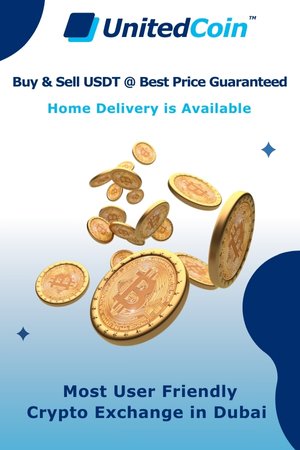Tether (USDT) is a type of cryptocurrency known as a stablecoin. Its value is pegged to traditional fiat currencies like the US dollar, meaning it aims to maintain a 1:1 ratio with the dollar, offering a more stable alternative to other cryptocurrencies such as Bitcoin or Ethereum. This stability makes Tether an appealing choice for investors seeking to avoid the extreme volatility of the crypto market.
Benefits of Using Tether USDT
Predictability and Stability
Tether provides a predictable and stable medium of exchange in the often turbulent cryptocurrency landscape. This stability is crucial for traders and investors who need to manage their portfolios without the added stress of significant price fluctuations.
Gateway to the Crypto World
For newcomers, Tether acts as an accessible entry point to the world of cryptocurrencies. It provides a less risky introduction to trading and holding digital assets, particularly in countries like Denmark, where financial stability is a priority.
Efficient Cross-Border Transactions
USDT facilitates faster and cheaper cross-border transactions compared to traditional banking systems. This feature is particularly beneficial for expatriates or businesses in Denmark that engage in international trade.
Legal Status of Tether in Denmark
In Denmark, cryptocurrencies, including Tether, are not considered legal tender but are recognized as taxable assets. The Danish Tax Agency (Skattestyrelsen) requires citizens to report profits and losses from crypto transactions as part of their income tax filings. It’s essential for users to keep detailed records of their cryptocurrency transactions to comply with local tax regulations.
Choosing a Crypto Exchange
When buying Tether in Denmark, the first step is selecting a reputable cryptocurrency exchange that operates within Danish regulations and offers USDT trading pairs. Here are some criteria to consider:
Security
Choose an exchange with robust security measures, such as two-factor authentication (2FA), end-to-end encryption, and cold storage of assets.
Ease of Use
The platform should be user-friendly, especially for beginners, with an intuitive interface and helpful customer support.
Fees
Compare transaction fees across exchanges as these can vary significantly and affect the overall cost of buying and maintaining your USDT holdings.
Regulatory Compliance
Ensure that the exchange complies with Danish regulations, including Know Your Customer (KYC) and Anti-Money Laundering (AML) guidelines.
Supported Payment Methods
Check whether the exchange supports convenient payment options available in Denmark, such as bank transfers, credit cards, or mobile payment systems like MobilePay.
How to Buy Tether USDT in Denmark
Step 1: Register on a Crypto Exchange
Select a crypto exchange that meets your requirements and create an account. You will need to provide personal information and complete the KYC process, which may include submitting identification documents.
Step 2: Deposit Funds
Once your account is set up, deposit funds using your preferred payment method. Most Danish-friendly exchanges accept bank transfers and credit cards.
Step 3: Buy Tether USDT
Navigate to the exchange’s trading platform, find the USDT trading pair with your deposited currency (e.g., EUR/USDT), and execute a buy order. You can choose from different types of orders, such as market order (buy at current market price) or limit order (set a specific price at which you want to buy).
Step 4: Secure Your Tether USDT
For added security, transfer your USDT from the exchange to a personal wallet. Hardware wallets offer the highest security for storing cryptocurrencies and are ideal for long-term holders.
Using Tether USDT in Denmark
Tether can be used for various purposes, including online buying, booking services, or as an investment. More businesses in Denmark are starting to accept cryptocurrencies, making it easier to use USDT for everyday transactions.
Risks and Considerations
While Tether offers many benefits, it’s not without risks. The cryptocurrency market is still relatively young and can be unpredictable. Moreover, the legal landscape could change, affecting how cryptocurrencies are used and taxed. Always stay informed about the latest regulatory developments in Denmark.
Future Trends and Developments in Tether Usage
As the cryptocurrency market evolves, so too does the role of stablecoins like Tether. In Denmark and globally, we can expect several developments that could further integrate Tether into the financial landscape:
Increased Institutional Adoption
Financial institutions are beginning to recognize the benefits of stablecoins for reducing transaction times and costs. As regulatory frameworks become clearer and more comprehensive, banks and other financial entities in Denmark may start incorporating USDT for internal and cross-border transactions.
Expansion in Digital Payments
The Danish government’s supportive stance on digital innovation could lead to broader acceptance of cryptocurrencies like Tether as a form of payment. This expansion would likely coincide with advancements in blockchain technology, making transactions even more secure and transparent.
Integration with Other Financial Services
Tether could be integrated into more diverse financial services, including lending, insurance, and more. These services could use USDT to provide more stable and efficient alternatives to traditional financial offerings, particularly in areas subject to high currency volatility.
Conclusion
Buying Tether USDT in Denmark is a straightforward process once you understand the steps involved. By choosing a reliable exchange and following best practices for security and compliance, you can safely and effectively add USDT to your investment portfolio. Whether you’re looking for stability in the volatile world of crypto or seeking an efficient way to handle cross-border transactions, Tether offers a viable solution.




